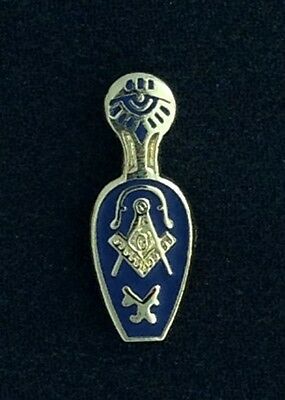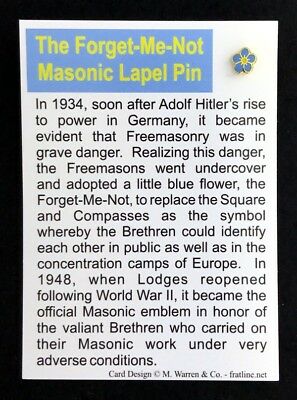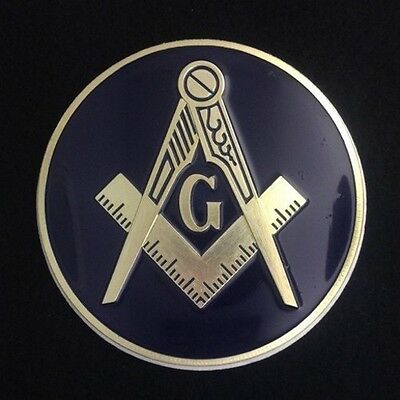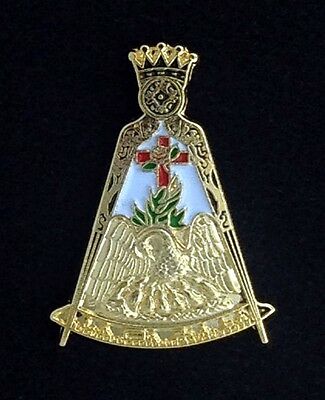-40%
KNIGHTS TEMPLAR SESQUICTENNIAL ANNIVERSARY RARE PLATE 1966
$ 47.52
- Description
- Size Guide
Description
Very Rare - Most Collectible - The Grand Encampment of Knights TemplarWilber M. Brucker
41st Grand Master
of the Grand Encampment
1964-1967
by George L. Marshall, Jr., PGC, KCT
Chairman, Grand Encampment Knights Templar History Committee
Wilber Marion Brucker; Governor of Michigan, national and state government official, and Grand Master at the Golden (50th) Convocation of Templary; was born in Saginaw, Michigan on June 23, 1894, the son of Ferdinand and Roberta (Hawn) Brucker. His father was a judge and congressman. He received his elementary and secondary education in the public schools of Saginaw and graduated with an LL.B. in 1916 from the University of Michigan at Ann Arbor. He was admitted to the Michigan bar in the same year. He helped earn his way through school by waiting on tables, selling newspapers, and doing various summer jobs. He also received his J.D. degree from the University of Detroit in 1931 and his Ph.D. from Hillsdale College and Alma College, in 1932.
After graduation in 1916, he enlisted as a private in the 33rd Infantry of the Michigan National Guard and participated in the United States Army expedition against Pancho Villa on the Mexican border. From 1917 to 1919, during and after the First World War, he was in the United States Army, advancing in rank from second to first lieutenant. He attended Officers' Training Camp at Ft. Sheridan, Illinois, and was commissioned and sent to France, where he attended the French Warfare School for American officers and was assigned to the 166th Infantry, 42nd (Rainbow) Division as a 1st Lieutenant. He participated in the Aisne-Marne, Saint-Mihiel, and Meuse-Argonne offensives; received the Silver Star and Purple Heart; and later served with the Army of Occupation on the Rhine in Germany until his return to this country in 1919.
In 1919 he established an independent practice of general law in Saginaw, later that year becoming Assistant Prosecuting Attorney of Saginaw County. Elected prosecuting attorney in 1922, he served two terms, and in 1926 he was appointed Assistant Attorney General of Michigan, remaining in that office until he was appointed Attorney General in February of 1928 to fill a vacancy. Elected to a full term in November of 1928, Brucker served as Attorney General until 1930.
He was married in New York City on August 18, 1923, to Clara Helen Hantel, daughter of Emil and Regina Hantel of Saginaw, and had a son, Wilber Marion, Jr., born in 1924.
A stalwart Republican, he was elected the 32nd Governor of Michigan in the fall election in 1930 and served one term (1931-1932). As Governor of Michigan, Brucker instituted a broad economy program which conserved state funds during the national economic depression of the period, and to those men on welfare, he gave work building roads in the state. He allowed no new taxes or state bond issues, insisted upon keeping politics out of law enforcement, and refusing to grant pardons, placed the parole system upon a merit basis. During his tenure, he strengthened the Michigan state police by adding one hundred men to the force. He was beaten in 1932 in the Democrat political landslide led by President Franklin D. Roosevelt.
In 1933 he moved to Detroit, Michigan, where he conducted a general independent law practice until 1937, after which he was a partner in the law firm of Clark, Klein, Brucker, and Waples in Detroit until 1954. After returning to his law practice, Brucker ran for the United States Senate in 1936, facing Prentiss M. Brown (a Mason) from St. Ignace. Brucker's billboards proclaimed: "Brucker Knows Michigan." Brown countered, "Michigan Knows Brucker," and won handily.
During this period, he continued to be active in the Republican party, serving as a delegate from Michigan to the Republican National Conventions in 1932 and 1936, as chairman of the 14th Congressional District Committee during 1945-49 and the Michigan State Convention in 1948, and as a member of the platform committee and as Michigan delegate at the 1948 Republican National Convention. In 1954, Dwight D. Eisenhower nominated him as General Counsel of the United States Department of Defense, and after confirmation by the United States Senate, he served as General Counsel for about one year. As General Counsel to the Department of Defense at the time of the Army-McCarthy hearings before the senate committee headed by Joseph R. McCarthy, Brucker insisted that the military give the committee all the facts it wanted, and in so doing he was considered instrumental in defusing some of the crisis atmosphere at the hearings.
Appointed Secretary of the Army to succeed Robert T. Stevens in July of 1955, Brucker remained in that post until January of 1961 when he returned to the practice of law in Detroit. Under Brucker's leadership as Secretary of the Army, the army's arsenal of defensive and offensive guided and ballistic missiles and rockets was greatly expanded, and work was furthered in all fields of research and development to assure the technological superiority of American arms. The army placed in orbit the country's first earth satellite on January 31, 1958, and subsequently, two additional satellites were launched. The army's combat divisions were completely reorganized according to the so called pentomic concept in order to adapt them fully to the requirements of either an atomic or non-atomic war on any scale; the powerful, mobile Strategic Army Corps was created, ready for movement by air to deal promptly with aggression in any part of the world, and the Army's Ready Reserve Forces were built to greater strength and effectiveness. Additionally, a large housing program was inaugurated and carried out at army installations at home and abroad, and policies and programs were put into effect which increased the attractiveness of an army career. In 1957, Brucker won acclaim for his supervision of the National Guard's intervention in Little Rock, Arkansas, to halt obstruction of school integration there. Brucker battled against suggestions that the United States stop defending Quemoy and Matsu, the Chinese Nationalist islands off the Chinese mainland, and he affirmed the government's intention to maintain United States troops in Berlin.
He was a member of many professional, civic, and patriotic organizations such as the American Bar Association; the Federal and Detroit bar associations; American Judicature Society; American Bible Society; Phi Gamma Delta; Delta Sigma Rho; Sigma Delta Kappa; Historical Society of Michigan; American Legion; Veterans of Foreign Wars; Rainbow Division Veterans; National Sojourners; Moose; Odd Fellows; Elks; University of Michigan Lawyers Club; Detroit Citizens League; and the Players, Kiwanis, and Economic clubs of Detroit.
His Masonic career began when he filed his Masonic petition on his 21st birthday and was raised in Salina Lodge No. 155 (now Salina-Pioneer No. 79) in Saginaw on September 15, 1915, later serving as its Master. He was a member of King Cyrus Chapter No. 133, Royal Arch Masons, of Detroit and Detroit Commandery No. 1, Knights Templar. He served the latter as Eminent Commander in 1943 and was Right Eminent Grand Commander of Michigan in 1951. He belonged to Detroit Consistory of the Ancient and Accepted Scottish Rite (N.M.J.), was a 33° Mason, and was a Noble of Moslem Shrine Temple.
Sir Knight Brucker was elected Grand Master of the Grand Encampment at the 49th Grand Convocation held in 1964 in Philadelphia, Pennsylvania. He presided at the 50th or "Golden" Convocation held in 1967 in Detroit, Michigan. During his tenure, the Sesquicentennial of Templary in the United States occurred in 1966. He was particularly active in the support and promotion of the Knights Templar Eye Foundation, a Masonic charity for eye disease. During his three-year term as Most Eminent Grand Master, he was responsible for raising the endowment of the Eye Foundation from 0,000 to million. At the 50th Convocation, the Knight Templar Cross of Honor award was approved, and the Knight Templar magazine was made a monthly magazine instead of being produced on a quarterly basis.
The author is in possession of a souvenir plate issued in commemoration of the Sesquicentennial Anniversary of Templary in the United States. On the front side is a depiction of the Grand Master's jewel of office, and on the reverse side is a message written by Most Eminent Sir Knight Brucker with his signature as follows:
"The Grand Encampment of Knights Templar of the United States of America returns to New York, the scene of its founding a century and a half ago, when on June 20, 1816, DeWitt Clinton was installed as our first Grand Master, and Templary in the United States began its forward march.
From a small band of five hundred valiant Sir Knights in 1816, through years of war and peace and economic prosperity and depression, the spirit of Templary has remained undaunted and steadfast in our allegiance to Christ. In 1966, upwards of four hundred thousand stalwart Knights Templar are enlisted under our banner and bear witness to their loyalty and devotion to our Christian cause.
To those who follow us, we pass the torch of Templar progress, confident that by precept and example, our beloved order of knighthood will be as enduring as time itself. I recommend to the Templar of tomorrow a firm reliance upon our motto: 'IN HOC SIGNO VINCES.'" Wilbur M. Brucker, Grand Master
Past Grand Master Brucker suffered an apparent heart attack after attending an Economic Club luncheon in Detroit and died soon after in the emergency room at Harper Hospital, Detroit, Wayne County, Michigan, on October 28, 1968 (age 74 years, 127 days). He was interred at Arlington National Cemetery, Arlington, Virginia. His wife Clara died on March 24, 1980, and was interred beside him. His son, Wilber Brucker, Jr., died on November 9, 2003, (also of a heart attack) and was interred in Grosse Pointe Memorial Church Columbarium, Grosse Pointe, Michigan.
Upon his death, General William C. Westmoreland, then United States Army Chief of Staff, said, "… Those who mourn him now may also mourn the passing of an age when the simple virtues of courage, loyalty, industry, and faith were enough to qualify a young man for Governor of Michigan."











